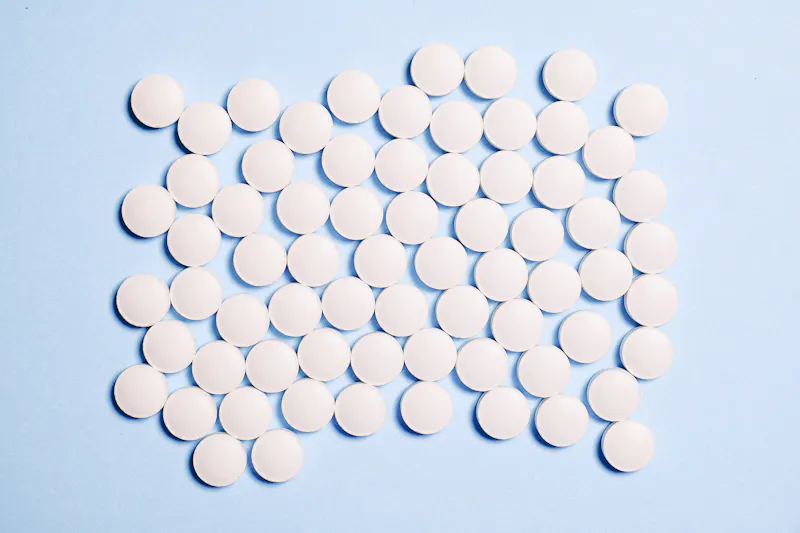Hormone replacement therapy (HRT)
What's covered?



Hormone replacement therapy (HRT) is a common menopause treatment that reduces unpleasant symptoms — like hot flushes, mood swings and insomnia. But some people find that it doesn’t work for them due to side effects. You can speak to your GP if you’re struggling with menopause symptoms and would like to try it.
What’s HRT?
Before menopause, a hormone called oestrogen keeps your body functioning as it should. It maintains your reproductive system, bone density, skin temperature, and more.
But when you go through menopause, your oestrogen levels drop — your ovaries begin to produce less and less of it. This causes menopause symptoms.
Symptoms often start months or years before your periods completely stop. This time period is called perimenopause.
HRT is a way of ‘topping up’ your oestrogen levels to lessen these symptoms.
Learn about your menopausal health with our menopause insights blood test.
What’s combined HRT?
Some women take combined HRT, which contains progesterone as well as oestrogen.
This is because taking oestrogen by itself can increase your risk of womb cancer. Taking progesterone at the same time as oestrogen reduces this risk.
You might not need to take combined HRT if you’ve had your womb removed (a hysterectomy). This depends on why you had a hysterectomy and the type of hysterectomy you had. You might also be able to take oestrogen by itself if you have an intrauterine system (IUS) in place, like a Mirena. This is because an IUS contains progesterone.
What are the benefits of HRT?
Menopause symptoms often go away after a few years. But they can be unpleasant, and sometimes have a serious impact on your everyday life. HRT is an effective way of reducing these symptoms.
HRT types
There are several types of HRT, including:
- gels — you rub these onto your skin every few days
- tablets — you usually take these once a day
- patches — you replace these every few days
- vaginal creams or pessaries — for symptoms like vaginal dryness and bladder problems
The type of HRT you use is a personal choice — what works for others might work less well for you, and vice versa.
When you talk to your doctor about HRT, they’ll ask you about your health history to help you decide which treatment option is best. That’s because certain types of HRT can increase your risk of certain health problems.
Is HRT safe?
The risks of taking HRT will depend on the type of HRT, the health conditions you already have and how long you take it for.
Taking combined HRT (oestrogen and progesterone) comes with an increased risk of breast cancer. Taking HRT tablets also comes with a small increased risk of blood clots and stroke.
This risk is small, and it starts to wear off once you stop taking HRT.
But if you have a history of certain cancers, heart disease, or stroke, your GP might recommend other treatments instead.
You should always speak to your doctor if you notice any unusual vaginal bleeding that starts after starting HRT.
HRT side effects
Lots of people use HRT without any problems. But side effects are also common.
Side effects of oestrogen include:
- headaches
- tender breasts and/or swelling
- feeling sick
- vaginal bleeding
- bloating
Side effects of progesterone include:
- headaches
- tender breasts
- vaginal bleeding
- mood swings
- depression
- acne
These side effects often reduce the longer you take HRT — usually disappearing after a few weeks.
If side effects carry on for longer than 3 months, or they’re severe, you should contact your GP for advice.
How do you get started on HRT?
Speak to your GP if you’re struggling with menopause symptoms. You can usually start using HRT straight away, without taking any tests first. Your GP will talk you through the different types of HRT — they'll usually start you off on a small dose.
What if HRT isn’t a suitable option?
You might decide HRT isn’t for you, and that’s OK.
Some people decide that the side effects outweigh the benefits. You might also choose to focus on treating one particular symptom with a different treatment instead.
There are lots of other treatment options to explore, including:
- cognitive behavioural therapy (CBT) — a type of talking therapy
- non-hormonal medicines for hot flushes — like clonidine and gabapentin
- some antidepressants, like SSRIs — might help with hot flushes
- alternative medicine — like acupuncture and acupressure
There isn’t much evidence that herbal remedies — like black cohosh and St John’s wort — help with symptoms. They could cause harm by interacting with your other medicines. It’s important to speak to your GP first if you’re interested in trying alternative or herbal treatments. Some treatments, even ‘natural’ ones, can be dangerous if they’re taken incorrectly.
Are there other ways to relieve symptoms?
Thankfully there are lots of things you can do to help your symptoms at home, including:
- doing regular exercise — this can help with sleep problems and hot flushes
- cutting down on alcohol, caffeine and spicy food — these trigger hot flushes
- reduce your stress levels — make sure you’re getting enough rest, do stress-relieving activities (like meditation and yoga), and exercise regularly
- staying cool — wear loose-fitting, moisture-wicking fabrics, especially at night
- trying vaginal lubricant — if you’re experiencing vaginal dryness
Avis, N. E., Crawford, S. L., & McKinlay, S. M. (1997). Psychosocial, behavioral, and health factors related to menopause symptomatology. Women's health (Hillsdale, NJ), 3(2), 103-120.
Bauld, R., & Brown, R. F. (2009). Stress, psychological distress, psychosocial factors, menopause symptoms and physical health in women. Maturitas, 62(2), 160-165.
Beral, V., Banks, E., Reeves, G., & Appleby, P. (1999). Use of HRT and the subsequent risk of cancer. Journal of epidemiology and biostatistics, 4(3), 191-210.
Canfell, K., Banks, E., Moa, A. M., & Beral, V. (2008). Decrease in breast cancer incidence following a rapid fall in use of hormone replacement therapy in Australia. Medical Journal of Australia, 188(11), 641-644.
Chen, C. L., Weiss, N. S., Newcomb, P., Barlow, W., & White, E. (2002). Hormone replacement therapy in relation to breast cancer. Jama, 287(6), 734-741.
Grindler, N. M., & Santoro, N. F. (2015). Menopause and exercise. Menopause, 22(12), 1351-1358.
Hou, N., Hong, S., Wang, W., Olopade, O. I., Dignam, J. J., & Huo, D. (2013). Hormone replacement therapy and breast cancer: heterogeneous risks by race, weight, and breast density. Journal of the National Cancer Institute, 105(18), 1365-1372.
Johnson, A., Roberts, L., & Elkins, G. (2019). Complementary and alternative medicine for menopause. Journal of evidence-based integrative medicine, 24, 2515690X19829380.
Katalinic, A., & Rawal, R. (2008). Decline in breast cancer incidence after decrease in utilisation of hormone replacement therapy. Breast cancer research and treatment, 107(3), 427-430.
Million Women Study Collaborators. (2005). Endometrial cancer and hormone-replacement therapy in the Million Women Study. The Lancet, 365(9470), 1543-1551.
Moilanen, J., Aalto, A. M., Hemminki, E., Aro, A. R., Raitanen, J., & Luoto, R. (2010). Prevalence of menopause symptoms and their association with lifestyle among Finnish middle-aged women. Maturitas, 67(4), 368-374.
Morse, C. A., Smith, A., Dennerstein, L., Green, A., Hopper, J., & Burger, H. (1994). The treatment-seeking woman at menopause. Maturitas, 18(3), 161-173.